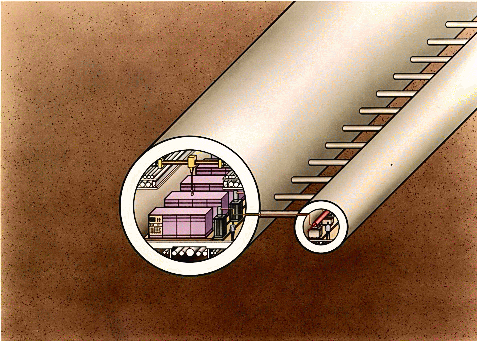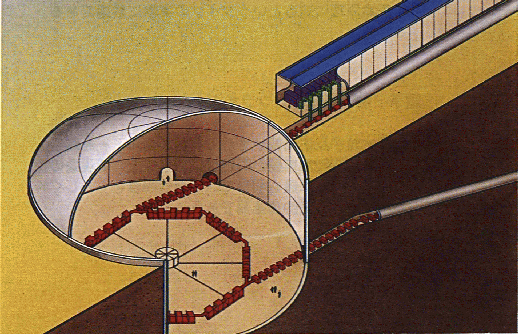
The accelerating fields of traditional linear accelerators have been
somewhere around 10MV/m, which requires a total of
75km-long accelerating tubes to get 750GeV per beam.
The total length of a linear collider thus becomes longer than
150km.
If we want to reduce the collider length to 25km or less, we need
an accelerating field in excess of 120MV/m.
The generation of such a high field requires
a high-power klystron capable of producing a peak power of
2GW per 10m
and an accelerating structure which can
put up with such a high power.
The first phase of JLC requires an RF system
which can generate a peak power of 400MW per 10m.

In order to achieve the required luminosity which is 100 times as large as the existing electron-positron colliders, we need to squeeze both beams down to a nano-meter level. This is only possible when ultra-low emittance beams are available. The ultra-low emittance beams are prepared by a 2GeV ultra-low impedance damping ring equipped with wiggler magnets to make beam particles to emit synchrotron radiation and with accelerating cavities of damped type to reject unwanted higher-mode wake fields. The emittance to be achieved in this damping ring is one-order-of-magnitude better than next-generation low-emittance synchrotron radiation rings and will promise a bright future for high-intensity high-quality light beam generation.
To next page, To previous page, To table of contents